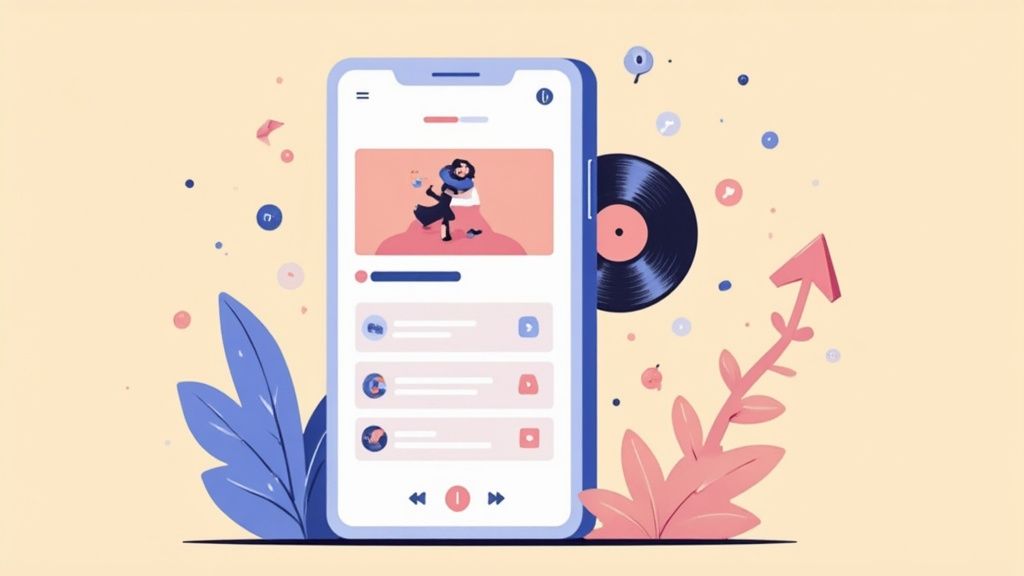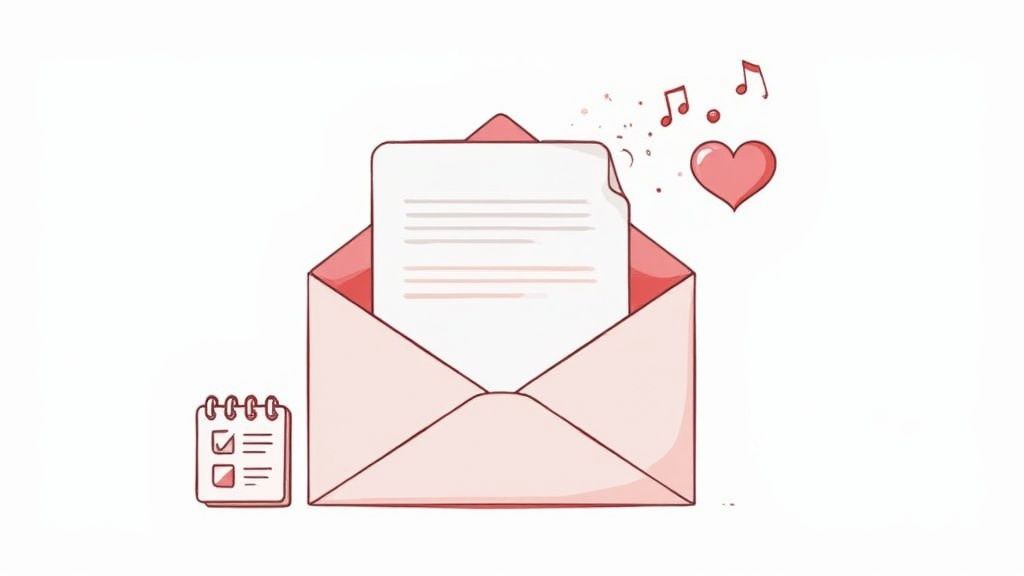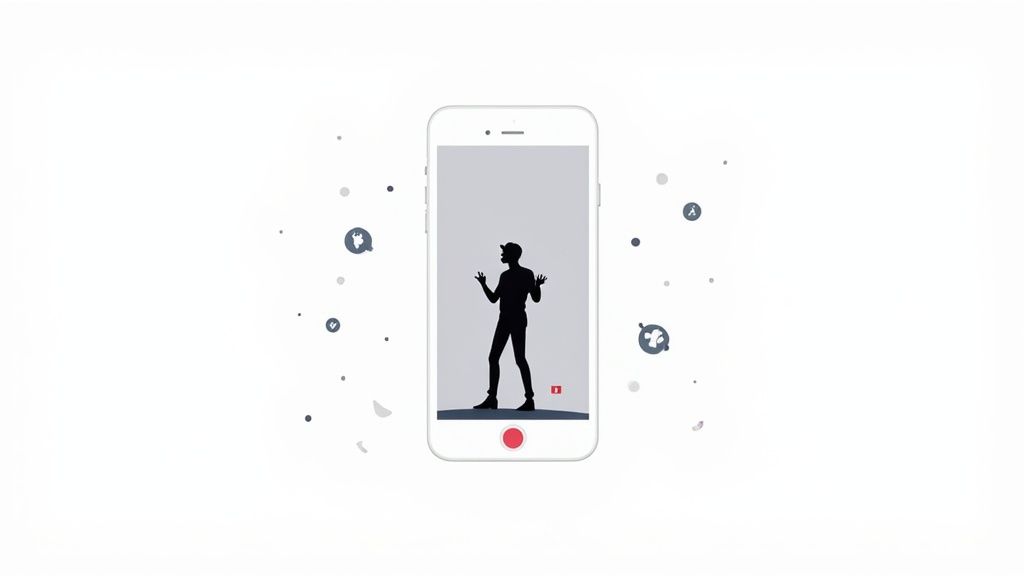In today's saturated music landscape, talent alone isn't enough. The responsibility of building momentum now falls directly on you, the artist, and effectively promoting independent music requires a multi-faceted, strategic approach that combines digital savvy with genuine fan connection. The old industry gatekeepers are gone, but that means navigating the path to getting heard can feel overwhelming. Whether you're a bedroom producer using Ableton, a rapper recording on BandLab, or a singer-songwriter struggling with your final mix, the challenge remains the same: cutting through the noise.
This guide moves beyond generic advice to provide a comprehensive roundup of 10 proven, actionable strategies you can implement immediately. We'll break down the specific steps, real-world examples, and essential tips needed to build a powerful promotion engine for your sound. From mastering TikTok's algorithm and securing playlist placements to building a loyal email list and leveraging powerful collaborations, each method is a vital piece of the puzzle. This isn't just a list of ideas; it's a practical blueprint designed to help you build a promotion plan that gets your music the attention it deserves and turns your passion into a sustainable career. Let's get started.
In today's digital landscape, social media is no longer optional; it's a primary engine for promoting independent music. Platforms like TikTok, Instagram, and YouTube Shorts have democratized music discovery, allowing artists to connect directly with a global audience without a traditional marketing budget. The key is consistent, authentic short-form video content that showcases not just your music, but your personality.
This strategy thrives on the algorithmic preference for engaging, shareable content. When Lil Nas X first promoted "Old Town Road" using a TikTok challenge, he transformed a self-released track into a chart-topping phenomenon. Similarly, artists like Claire Rosinkranz built a massive following by consistently sharing relatable, behind-the-scenes glimpses into their creative process, turning viewers into dedicated fans.
For a deeper dive into building an effective online presence, consult a comprehensive social media marketing strategy playbook. Ultimately, this approach is about more than just views; it’s about creating a sustainable fanbase that grows with you. You can find more details in our guide on how to promote music online.
Securing a spot on an influential playlist is one of the most powerful methods for promoting independent music, capable of generating millions of streams overnight. By strategically pitching your tracks to curators on platforms like Spotify, Apple Music, and Amazon Music, you can bypass traditional gatekeepers and place your music directly in front of highly engaged listeners. This strategy is about getting your music heard by the right people at the right time.

This approach was instrumental in the rise of artists like Rex Orange County and Dodie Clark, whose early breakthroughs were significantly boosted by placements on curated Spotify playlists. By getting their songs into playlists like "New Music Daily" or genre-specific collections, they reached a massive, pre-existing audience primed to discover new artists. It’s a modern-day equivalent of getting radio play, but with a global reach and data-driven precision.
For more information on preparing your music for distribution and pitching, explore our guide on how to release music independently. Success in playlisting is not just about one song; it's about building momentum release after release.
While social media is crucial for discovery, email marketing is where you convert casual listeners into a dedicated community. Building an email list gives you a direct, unfiltered channel to your most engaged supporters, free from the unpredictable nature of platform algorithms. This is a powerful tool for promoting independent music because it allows for personal, long-form storytelling and exclusive offers that build deep loyalty.

This direct-to-fan model was a cornerstone of Macklemore's independent rise, allowing him to mobilize his fanbase for releases and tours with massive success. Similarly, artists like Jonathan Coulton and Amanda Palmer have built entire careers on this foundation, using platforms like Mailchimp or ConvertKit to share personal updates, launch crowdfunded projects, and sell merchandise directly to the people who want it most. This strategy transforms your audience from passive consumers into active patrons of your art.
One of the most powerful methods for promoting independent music is joining forces with other artists. Collaborations, features, and remixes serve as a potent cross-pollination tool, exposing your music to an entirely new, yet often relevant, audience. This strategy allows artists to merge their creative energies and, more importantly, their fanbases for mutual growth.
This approach is highly effective because it introduces your sound to listeners who already trust the taste of an artist they follow. When Logic featured Eminem on "Homicide," it instantly put him on the radar of a massive, established hip-hop audience. Similarly, the entire SoundCloud rap scene was built on a foundation of constant collaboration, where artists like XXXTENTACION and Ski Mask the Slump God elevated each other's careers by consistently appearing on one another's tracks.
This method is about building bridges, not just one-off tracks. You can discover more about forging successful partnerships in our guide on effective music collaboration. By leveraging another artist's platform, you can significantly accelerate your growth and build lasting creative relationships.
Beyond being a music video host, YouTube is a powerful hub for building a dedicated fanbase through long-form content. By creating a consistent content series, you can offer deeper insights into your artistry, personality, and creative world, turning casual listeners into loyal supporters. This strategy is a cornerstone of promoting independent music because it builds a direct, long-term relationship with your audience.
Artists like Ed Sheeran used YouTube to build a massive following with acoustic sessions and vlogs long before his major label success. More recently, producers like Simon Servida and collectives such as Internet Money have leveraged tutorials and "cook-up" videos to establish their brands and promote their music. This approach transforms your channel from a simple music repository into a must-watch destination for fans interested in your journey.
To learn more about optimizing your videos, explore a guide on YouTube SEO best practices. Ultimately, a strong YouTube presence provides a platform for fan connection that short-form content alone cannot replicate. You can get more ideas from our article on unique music promotion tactics.
Live streaming offers a powerful, direct-to-fan channel for promoting independent music, bypassing geographical barriers to create intimate, real-time concert experiences. Platforms like Twitch, YouTube Live, and Instagram Live allow artists to perform for a global audience, build a dedicated community, and even generate revenue through subscriptions, donations, and virtual ticketing. It’s a modern-day digital stage accessible from anywhere.

This approach gained massive traction during the COVID-19 pandemic, but its value endures. Artists like Khalid hosted intimate Instagram Live sessions, while electronic producers built entire careers within the Twitch music community. The concept extends even to virtual worlds, with major artists like Lil Nas X performing within games like Minecraft, proving that a venue can be anywhere your audience gathers online.
Beyond running your own social media, strategically partnering with established content creators and influencers offers a powerful shortcut to a wider audience. This approach involves getting your music featured in their videos, leveraging their credibility and engaged followers to drive discovery. When a creator’s content aligns with your music’s vibe, the placement feels organic and can spark viral trends.
This method is central to promoting independent music in the current landscape. A creator with a dedicated niche following can introduce your track to thousands of potential fans who already trust their taste. For instance, a well-placed song in a popular gamer’s stream, a travel vlogger’s montage, or a TikTok dance challenge can generate massive exposure almost instantly, leading to spikes in streams and Shazam searches.
Beyond the visual-first world of social media, podcasts offer a powerful, intimate channel for promoting independent music. Securing guest appearances on relevant shows allows you to connect with dedicated audio consumers in a long-form format, sharing your story and creative process in a way that builds a deep, lasting connection with listeners.
This strategy capitalizes on the high engagement and loyalty of podcast audiences. When an artist appears on a show like Song Exploder to break down their track, or shares their journey on a niche indie music podcast, they are reaching a pre-qualified audience eager for new discoveries. Listeners are already tuned in and receptive, making it a highly effective method for converting casual listeners into genuine fans who appreciate the artist behind the music.
While digital promotion dominates the conversation, building a real-world local fanbase is a powerful and often overlooked strategy for promoting independent music. This approach focuses on creating authentic, in-person connections through local performances, community engagement, and organic word-of-mouth. It’s about building a dedicated core audience that becomes your foundation for broader expansion.
This strategy creates true advocates for your music. Before their global success, the Arctic Monkeys famously built a rabid following in Sheffield by handing out demo CDs at gigs, allowing their music to spread virally through the local scene. This created a groundswell of demand that labels couldn't ignore. Similarly, The Black Keys relentlessly played small venues in and around Akron, Ohio, cultivating a loyal fanbase that championed them long before they achieved mainstream recognition.
While organic growth is essential, strategic paid advertising offers a powerful way to accelerate audience discovery and engagement. Platforms like Meta (Facebook/Instagram), YouTube, and even Spotify provide robust tools for promoting independent music directly to highly targeted listener segments. This data-driven approach allows you to move beyond your existing network and find new fans based on their interests, demographics, and online behavior.
This strategy is about precision and scalability. Instead of waiting for the algorithm to find your audience, you invest a budget to place your music directly in front of them. For instance, an artist can run a video ad campaign on Instagram Stories targeting fans of similar artists in a specific city, driving them to a new single on Spotify. The key is to treat it not as a shortcut, but as a focused tool for amplifying your organic efforts and reaching potential fans who would otherwise never discover your sound.
Navigating the world of music promotion can feel as complex as composing a symphony, but it doesn't have to be overwhelming. The strategies we've explored, from mastering TikTok's algorithm and pitching to playlist curators to building a loyal email list and collaborating with fellow artists, are not isolated tactics. Instead, they are interconnected components of a powerful, cohesive engine for growth. The core takeaway is this: consistency and integration are your greatest assets. Promoting independent music successfully isn't about doing everything at once; it's about doing a few things exceptionally well and creating a flywheel effect where each effort amplifies the others.
Think of it this way: your YouTube content can fuel your email list, your local community events can create content for your social media, and a successful playlist placement can be leveraged for press outreach. It all works together. Your journey begins with an honest assessment of your strengths. Are you a natural on camera? Double down on TikTok and live streaming. Are you a gifted writer? Your email newsletter and blog could become the heart of your fan community. Choose one or two strategies from this guide that genuinely excite you and commit to them for the next 90 days. Track your results, learn from the data, and then strategically layer in the next approach.
To avoid getting stuck, here is a simple, actionable path forward:
Ultimately, the most effective tool in promoting independent music is a genuine connection with your audience, built on the back of incredible art. Every promotional activity should be an extension of your artistic identity, offering fans another way to engage with you and your world. By combining a persistent, strategic marketing approach with a final product that is sonically flawless, you create an undeniable proposition. You give people a reason not just to listen, but to care, to share, and to follow you on your journey. Your music deserves nothing less.
Before you launch your next promotional campaign, ensure your track is ready to compete on a professional level. A poor master can undermine all your hard work, especially in critical listening environments like a car stereo. Get a professional, polished sound optimized for every system with CarMaster, ensuring your music makes the powerful first impression it deserves.